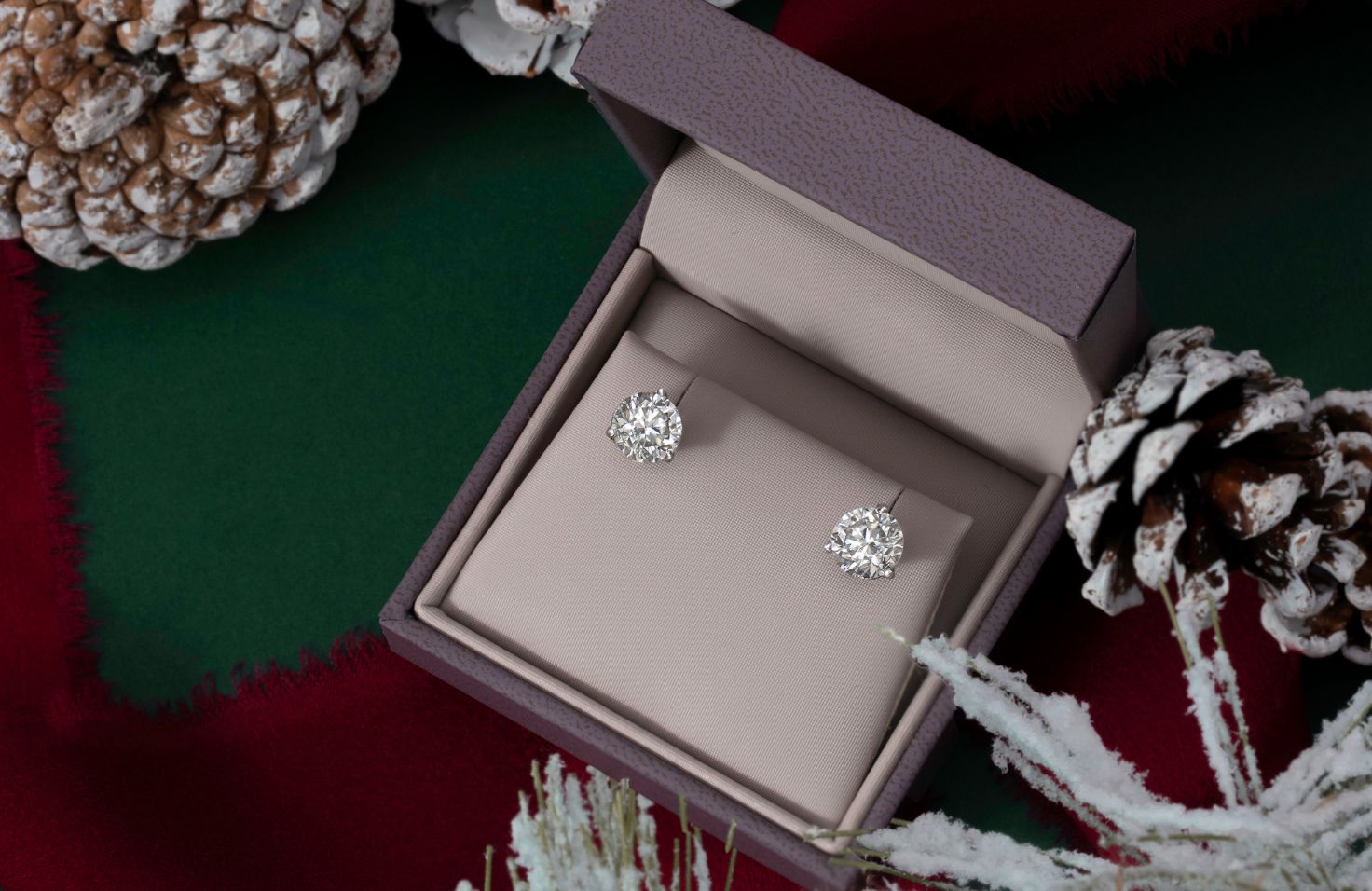Understanding the 4Cs of Lab-Grown Diamonds: A Comprehensive Guide

When shopping for a lab-grown diamond, one of the most important factors to consider is the 4Cs lab grown diamonds. Just like mined diamonds, lab-grown diamonds are graded using the 4Cs, which refer to Cut, Color, Clarity, and Carat weight. Understanding these four characteristics can help you select the best lab-grown diamond for your needs, ensuring you get a beautiful, high-quality stone that fits both your aesthetic preferences and budget. In this article, we’ll explore each of the 4Cs in detail, focusing on how they apply specifically to lab-grown diamonds.
Table of Contents
What Are the 4Cs of Lab-Grown Diamonds?
The 4Cs of lab-grown diamonds—Cut, Color, Clarity, and Carat weight—are the universal grading criteria used by gemologists to evaluate the quality and beauty of a diamond. These criteria were developed by the Gemological Institute of America (GIA) and have been adopted by jewelers worldwide for both mined and lab-grown diamonds. Understanding each of these factors will give you a clearer idea of how lab-grown diamonds are graded and how they compare to mined diamonds.
Cut: The Most Important of the 4Cs
When it comes to the 4Cs of lab-grown diamonds, Cut is perhaps the most crucial factor. The cut of a diamond refers to how well the diamond has been shaped and faceted. It is the only factor of the 4Cs that is influenced by human skill and craftsmanship. A well-cut diamond will reflect light in the most beautiful way, showcasing its brilliance and sparkle.
Lab-grown diamonds are cut in the same way as natural diamonds, with various shapes and styles available, such as round, oval, princess, emerald, and more. The quality of the cut plays a significant role in determining how a diamond will appear. Lab-grown diamonds, just like mined diamonds, can be cut with precision to enhance their brilliance. A well-cut lab-grown diamond will sparkle beautifully, while a poorly cut diamond may appear dull and lifeless.
Color: Understanding Diamond Color Grading
The Color of a diamond refers to the absence of color in the stone. The GIA and other grading institutions use a scale from D (colorless) to Z (light yellow or brown) to grade diamond color. Lab-grown diamonds are graded using the same scale as mined diamonds, so you can expect similar variations in color.
Lab-grown diamonds are typically created using two main methods: Chemical Vapor Deposition (CVD) or High Pressure High Temperature (HPHT). Both methods can produce colorless diamonds, although lab-grown diamonds may also come in different hues, including shades of yellow, blue, or even pink. For a colorless lab-grown diamond, the higher the grade, the more valuable the diamond is considered.
Many buyers prefer lab-grown diamonds with higher color grades, such as D, E, or F, because these diamonds appear brighter and more transparent. However, diamonds with lower color grades, such as G to J, can still offer excellent value without compromising much on appearance, especially when set in jewelry.
Clarity: Evaluating Inclusions and Blemishes
Clarity is another crucial factor in determining the quality of a lab-grown diamond. This 4C refers to the presence of inclusions (internal imperfections) and blemishes (external imperfections) in the diamond. The fewer inclusions and blemishes a diamond has, the higher its clarity grade.
Lab-grown diamonds, like mined diamonds, are graded on a scale ranging from Flawless (FL) to Included (I1, I2, I3), with several grades in between. It’s important to note that most lab-grown diamonds will have some inclusions or minor blemishes, but many of these are microscopic and not visible to the naked eye. A diamond with a high clarity grade, such as VS1 or VS2, will appear flawless to most people and is often chosen for engagement rings and fine jewelry.
One of the benefits of lab-grown diamonds is that they tend to have fewer inclusions than mined diamonds. Since lab-grown diamonds are produced in controlled environments, they may exhibit fewer natural imperfections, giving them an edge in terms of clarity. If you’re looking for a flawless diamond, a high-quality lab-grown diamond may be an excellent option.
Carat Weight: Understanding Diamond Size
Carat weight refers to the size of the diamond and is one of the most noticeable factors when evaluating a diamond. A higher carat weight typically means a larger diamond, although the diamond’s cut, clarity, and color also play important roles in its overall appearance and value.
For lab-grown diamonds, carat weight is an essential consideration for buyers who prioritize size. Lab-grown diamonds tend to be more affordable than mined diamonds, so you can often get a larger stone for the same price. This makes them an excellent choice for those looking for a bigger diamond without breaking the bank.
It’s important to remember that carat weight doesn’t necessarily correlate with the diamond’s quality. Two diamonds of the same carat weight can look very different depending on their cut, color, and clarity. When shopping for a lab-grown diamond, consider the overall balance of the 4Cs to ensure you select a diamond that not only has the desired size but also looks beautiful and is high in quality.
How the 4Cs of Lab-Grown Diamonds Impact Value
Just like natural diamonds, the value of a lab-grown diamond is primarily determined by the 4Cs. Generally, man made diamonds with higher ratings in Cut, Color, Clarity, and Carat weight are more expensive. However, since lab-grown diamonds tend to be more affordable than their mined counterparts, you can often purchase a larger or higher-quality lab-grown diamond within your budget.
Lab-grown diamonds with excellent Cut, higher Color grades, and high Clarity ratings can be priced similarly to high-quality mined diamonds, though they typically cost 30-40% less. This allows consumers to purchase diamonds that are visually stunning and of excellent quality at a fraction of the cost.
How to Choose the Best Lab-Grown Diamond for You
When selecting a lab-grown diamond, it’s important to prioritize the 4Cs based on your personal preferences and budget. Some buyers may value size and choose a larger carat weight, while others may prioritize cut quality or clarity. It’s also important to work with a reputable jeweler who can provide detailed grading reports and help you navigate the nuances of diamond selection.
Remember that the 4Cs work together to determine the overall beauty and value of a lab-grown diamond. A well-cut diamond with high clarity and a desirable color will often have a brilliant, eye-catching appearance.
Conclusion: The Importance of the 4Cs in Lab-Grown Diamonds
The 4Cs—Cut, Color, Clarity, and Carat weight—are essential factors to consider when purchasing a lab-grown diamond. Each of these characteristics plays a crucial role in determining the beauty, quality, and value of the diamond. By understanding the 4Cs and how they apply to lab-grown diamonds, you can make a more informed decision and find a diamond that perfectly suits your preferences and budget. Whether you’re purchasing a lab-grown diamond for an engagement ring, jewelry, or a special occasion, considering the 4Cs ensures that you get the best diamond for your needs.







